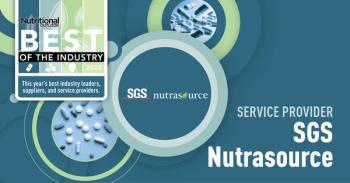
|Slideshows|December 16, 2016
10 Most-Read Stories of 2016
Author(s)Michael Crane
With 2016 nearly over, we look back on our most popular stories of the year.
Advertisement
Newsletter
From ingredient science to consumer trends, get the intel you need to stay competitive in the nutrition space—subscribe now to Nutritional Outlook.
Advertisement
Advertisement
Advertisement
Trending on Nutritional Outlook - Supplement, Food & Beverage Manufacturing Trends
1
New LOAM prebiotic fiber formula includes NutriLeads’ Benicaros ingredient
2
Certifications, Clinical Trials, and Consumer Trust: How SGS NutriSource Serves the Industry
3
Inside Out Wellness: Supplements for Every System
4
Artemis International: 30 Years of Science-Backed Berry and Botanical Innovation
5





